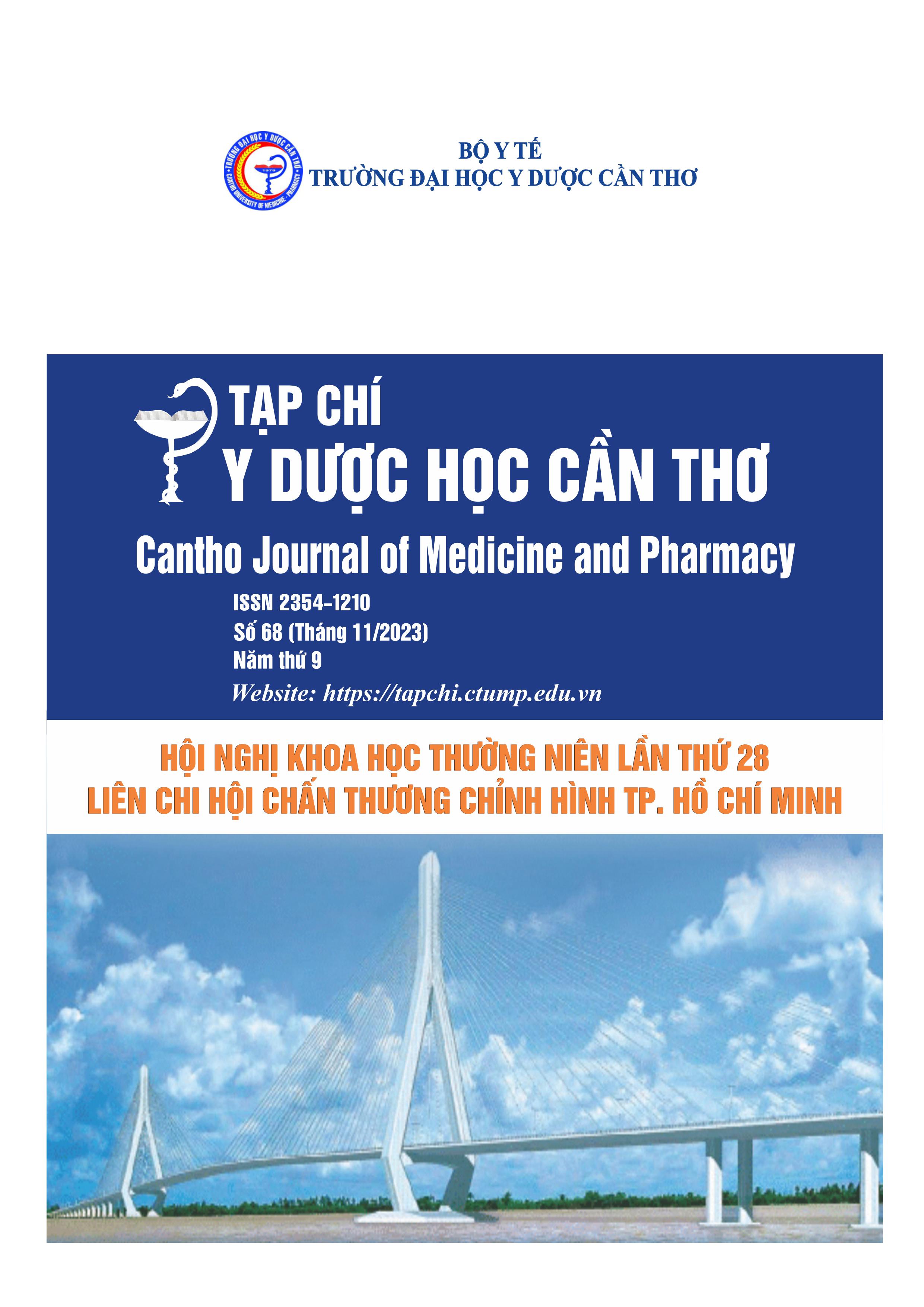TÁI TẠO DÂY CHẰNG CHÉO SAU THEO GIẢI PHẪU BẢO TỒN GỐC DÂY CHẰNG SỬ DỤNG LỐI VÀO GIAN DÂY CHẰNG CHÉO
Nội dung chính của bài viết
Tóm tắt
Tổn thương dây chằng chéo sau trong đa số các trường hợp vẫn còn phần gốc dây chằng. Tái tạo dây chằng chéo sau bảo tồn phần dây chằng còn lại là phương pháp đem lại kết quả tốt hơn cho người bệnh, giúp lành mảnh ghép tốt hơn. Ngoài ra, tái tạo đúng giải phẫu dây chằng chéo sau cũng là một yếu tố then chốt để đạt được kết quả tốt. Tuy nhiên để đạt được điều này, phẫu thuật viên cần tiếp cận được khoang sau khớp gối, quan sát rõ điểm bám phía chày của dây chằng chéo sau. Kỹ thuật “trans-septal” được Ahn giới thiệu giúp tiếp cận gốc dây chằng chéo sau phía chày bằng 2 cổng sau trong và sau ngoài, tuy nhiên kỹ thuật này không dễ thực hiện. Bancha giới thiệu kỹ thuật tiếp cận khoang sau khớp gối qua khoảng gian dây chằng chéo trước và chéo sau. Kỹ thuật tiếp cận khoang sau khớp gối thông qua khoảng trống gian dây chằng chéo được chúng tôi áp dụng trong tái tạo dây chằng chéo sau giúp quan sát rõ điểm bám dây chằng, từ đó đạt được giải phẫu cho vị trí mảnh ghép.
Chi tiết bài viết
Từ khóa
Dây chằng chéo sau, tái tạo dây chằng, khoang sau khớp gối, khoảng gian dây chằng
Tài liệu tham khảo
10.1053/jars.2003.50017.
2. Nicodeme, J.D., C. Löcherbach, and B.M. Jolles, Tibial tunnel placement in posterior cruciate ligament reconstruction: a systematic review. Knee Surgery, Sports Traumatology, Arthroscopy, 2014. 22(7): 1556-1562. DOI: 10.1007/s00167-013-2563-3.
3. Chernchujit, B., L.J. Loong, and S. Chaudhari, Intercruciate trans-septal arthroscopic approach to the posterior compartment of the knee joint. J isakos, 2023. DOI:
10.1016/j.jisako.2023.07.004.
4. Lee, D.W., et al., Clinical, Functional, and Morphological Evaluations of Posterior Cruciate Ligament Reconstruction With Remnant Preservation: Minimum 2-Year Follow-up. The American Journal of Sports Medicine, 2014. 42(8): 1822-1831. DOI: 10.1177/0363546514536680.
5. D’Ambrosi, R., A. Hallé, and A. Hardy, Good clinical and radiological results following remnant-preserving posterior cruciate ligament reconstruction: a systematic review. Knee Surgery, Sports Traumatology, Arthroscopy, 2023. 31(6): 2418-2432. DOI: 10.1007/s00167022-07192-z.
6. Rhatomy, S., et al., Knee Laxity or Loss of Knee Range of Motion after PCL Reconstruction: A Systematic Review and Meta-Analysis. Annals of Applied Sport Science, 2020. 8: 1-24. DOI:
10.29252/aassjournal.938.
7. James, E.W., C.E. Taber, and R.G. Marx, Complications Associated with Posterior Cruciate Ligament Reconstruction and Avoiding Them. J Knee Surg, 2021. 34(6): 587-591. DOI: 10.1055/s-0041-1723016.
8. Ahn, J.H., et al., Increasing the distance between the posterior cruciate ligament and the popliteal neurovascular bundle by a limited posterior capsular release during arthroscopic transtibial posterior cruciate ligament reconstruction: a cadaveric angiographic study. Am J Sports Med, 2007. 35(5): 787-92. DOI: 10.1177/0363546506297908.


